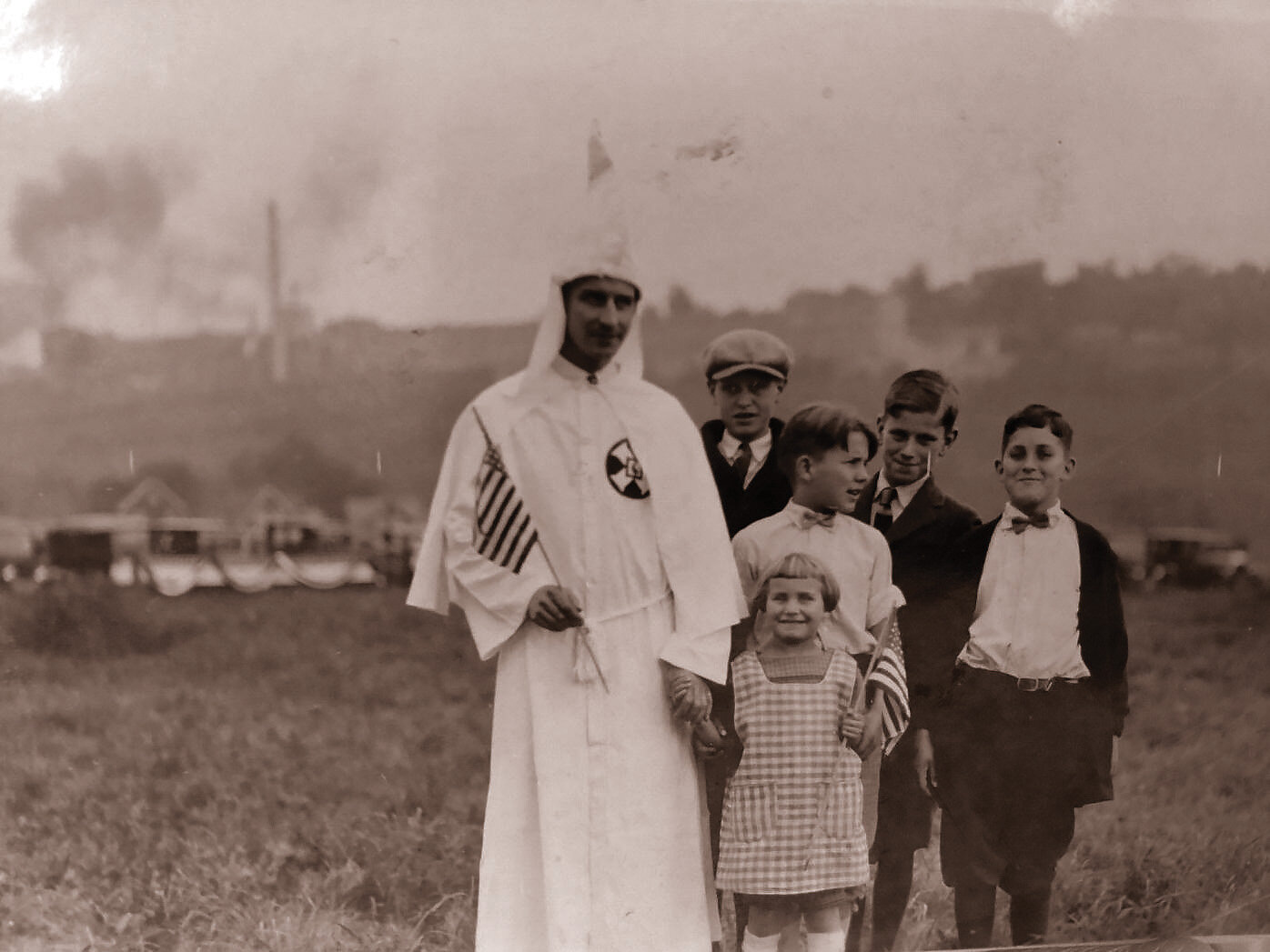WHITES ONLY Female Ku Klux Klan members march through Binghamton, NY, in the 1920s, NPR.org photo
When the KKK was local
Rockland, too, had its share of bigots in white
By Edward Lundquist | Manor Ink
The Ku Klux Klan has had a long, deep-rooted history in the north country. In the early 1920s, along with a time of prosperity, there was also a time of bigotry. The original KKK had sort of dissolved, but it was reborn anew after the release of the book The Clansman: A Historical Romance of the Ku Klux Klan, a novel published in 1905, or, more popularly, the incredibly offensive movie based on it, “Birth of a Nation” from 1915. It was thus used as a recruiting tool, an agent for hate speech and an object to incite violence.
The original KKK rose up immediately after the end of the Civil War as a way to maintain white supremacy and make sure that African Americans would not receive political, social or civil rights. Klan members blatantly used torture and murder, including lynching, and also coerced politicians into favoring white supremacy. To appeal to common people, they fabricated ways black people acted overly aggressive, especially toward white women.
KIDS, TOO A Klansman poses with his family during a 1925 KKK rally in Ithaca, NY. History Center of Tompkins County photo
The 1920s version of the KKK focused not only on black people, but Jews, Catholics, immigrants and occasionally criminals. Klansmen basically just used their membership in the group to target anyone they even slightly didn’t like. They called themselves the definition of Americanism, patriotic, religious fundamentalists and Caucasians. One Klan leader’s explanation of the requirements to join the group was as follows: “Catholics bar themselves by their allegiance to the pope; the Jews because they do not believe in the birth of Christ, and Negroes because of their color. We want only Caucasians ... We are organized to maintain American principles, and are opposed only to lawlessness and lack of Americanism.”
Especially here in the north, the KKK ran into some issues with their overzealous persecutions. At the time, one of their main targets were Irish Catholic immigrants who had come to America to find work. The irony was that these immigrants were greatly helping the economy and contributing to the betterment of the region, working on building railroads and houses. By persecuting them, the Klansmen were effectively stepping on their own toes.
In Livingston Manor, the Klan was an intimidating presence, and there was an embarrassing amount of activity in support of the group among the citizens. Meetings were often held on Round Top mountain (it can be seen behind Rock Avenue), which was treeless at the time. It was common to hear explosions of dynamite and see burning crosses at the top of the hill at exactly midnight, surrounded by figures clad in white.
The Klan even felt so comfortable in the Manor, they would hold occasional parades. Sharkley McAdam, one of the better known Klan leaders in town, would ride bareback on his horse, clad in the robes of the KKK, holding a rifle. These monotone parades of people were typical happenings, and they were often joined by citizens along the route.

